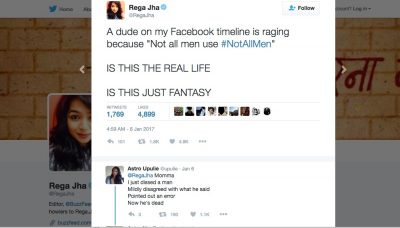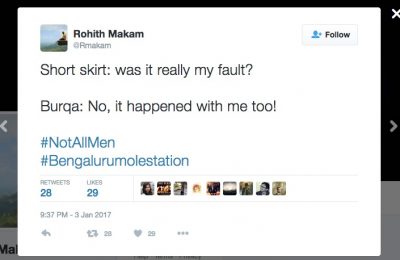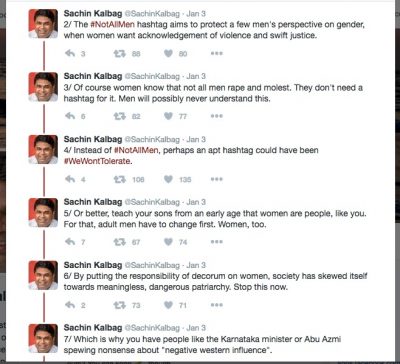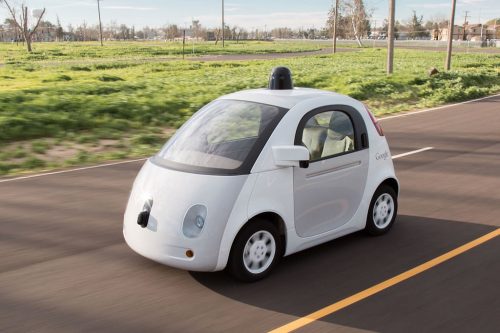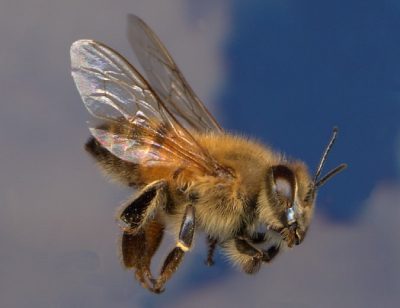 I need to start this essay by making one thing clear: I will not in any way suggest that cam girls or the work that they do is problematic. On the contrary, this essay is aimed at appreciating some of the complexity involved in this form of sex work. In particular, it examines how the culturally ubiquitous trope of the Manic Pixie Dream Girl (MPDG) shapes the expectations an audience might place on cammers (especially young cis-women cammers) and how cammers anticipate and capitalize on such expectations. more...
I need to start this essay by making one thing clear: I will not in any way suggest that cam girls or the work that they do is problematic. On the contrary, this essay is aimed at appreciating some of the complexity involved in this form of sex work. In particular, it examines how the culturally ubiquitous trope of the Manic Pixie Dream Girl (MPDG) shapes the expectations an audience might place on cammers (especially young cis-women cammers) and how cammers anticipate and capitalize on such expectations. more...
commentary

With the 50th anniversary of the original series and impending debut of Star Trek: Discovery later this year, it seems like an ideal time to look back at how this franchise—which is so near and dear me and many of my fellow Cyborgologists—has imagined technology.
Those who grew up in the era of the recent J.J Abrams “reboot” series of action films, could be forgiven for thinking of the Star Trek universe is little more than a thin narrative strand binding together adrenaline hits in yet another forgettable instantiation of the timeless male fantasy of blowing shit up in space. But, in its prime, Star Trek’s cerebral nature and its relentless interrogation of moral and social values set it apart from other successful 20th Century space dramas like Star Wars or the original Battlestar Galactica series.
The original Star Trek series was notably progressive in employing women writers (primarily D.C. Fontana) and having a racially diverse cast, and it famously featured television’s first interracial kiss (which, speaking to the cerebral nature of the show, took place on a planet whose inhabitants where trying to enact the ideas of Plato’s Republic). Later series would push the envelope on media representation by featuring Black (DS9) and women (Voyager) captains. This opened the way to more explicit reflections of race and gender politics by the show’s characters.
Most significant, though, is the way that politics were baked into the setting of the Star Trek universe from the beginning. Creator Gene Roddenberry imagined that, with the elimination of material scarcity (and money along with it), 24th Century Earth would become a paradise. Having everything, humans would collectively turn away from the goal of accumulating wealth and toward the mutually intertwined goals of interplanetary exploration and self-realization. more...

Earlier this week, I posted a remembrance of the ways Zygmunt Bauman influenced us here at Cyborgology. In this post, I reflect on–and attempt to further develop–some of the aspects of Bauman’s thought that may be useful to us as we continue our work theorizing digital media.
Two things I most admired about Zygmunt Bauman were his ability to relate his theories to current events (even as he aged into his 90s) and the way he always manage to connect social theory and moral philosophy–how to achieve justice as a society and lead a good life as an individual.
To the former point, Bauman was remarkably prolific up until his final days. In a 2016 interview that sets the tone for my reflection here, he argued:
most people use social media not to unite, not to open their horizons wider, but on the contrary, to cut themselves a comfort zone where the only sounds they hear are the echoes of their own voice, where the only things they see are the reflections of their own face. Social media are very useful, they provide pleasure, but they are a trap. You should only trust some authorized sites for checking reviews.
This notion of social media as a pleasurable trap–and how Bauman comes to understand it this way–is the lens through which I would like to review his sizable body of work. more...
When I was conference-hopping last month, I caught up with an academic friend who had unfollowed me on Twitter. While transiting from a proper academic conversation at the dinner table of a nice restaurant to a more intimate catch-up about our personal lives over drinks in a cosy bar, my friend admitted that they thought my use of Twitter was very “brave”. I didn’t understand. Specifically, they had unfollowed me because my Twitter stream was too “cluttered” and “spammy” and my tweeting habits were too frequent. It seemed “brave” was polite-speak for “homgh aren’t you afraid someone important might see your tweets”?
You see, my friend curates a rather professional persona on their Twitter account. They announce new publications, tweet links to other academic papers within their research interests, “heart” research announcements they want to archive from other academic tweeters, or live-tweet good soundbytes from conferences. Like many academics, I engage in all of these activities too. But alongside these mechanisms of socializing research, I also often tweet my favourite Pusheen gifs without context, muse about unimportant things in life, subtweet random interactions I witness throughout the day, whine about being awake at 0300hrs, and publicly declare my undying love for chicken nuggets – all under the same handle.
My Twitter bio reads: “my twitter is frivolous. navigating academia while whining about the weather.” in small caps (because, you know, that’s supposed to convey that I’m not 100% serious on Twitter all the time). I also tweet half-serious Public Service Announcements every time a new surge of tweeters follow me post-conference to forewarn them of the mixed-genre and frivolity of my content – this, because I understand that even among academics we use Twitter for various reasons to express various things to various audiences. Yet for all these worries, there are many tweeters like me just as there are many tweeters like my friend. Some of us code-switch between audiences, adopting different registers depending on circumstance. On the internet, such code-switching takes place both across platforms and within platforms, across handles/accounts and within handles/accounts. It’s not too dissimilar from how my friend and I progressed from serious adult academic conversation in a nice restaurant where the length of the table, brightness of the lights, and proximity to other patrons set the tone for our conversation; to personal intimate catch-ups in a cosy bar where the array of cushions on a comfy couch, soothing jazz music, dim lights, and overall decorum of friendly bar staff lubricated a different kind of sociality.
Code-switching and linguistic acrobatics influenced by internet-speak have permeated various demographies and parts of the world, albeit with different intensities of uptake and with a curious blend of glocal hybrids. On Tumblr and 9GAG where I, an anthropologist of internet culture, live, three great memes of 2016 address young people’s code-switching skills. In this post, I share some of the “bone apple tea”, “me, an intellectual”, and “increasingly verbose” memes I have been collecting in the past year and their implicit messages of youth savvy. more...
On December 16, 2012, a violent incident took place on the streets of New Delhi, India: a 23 year old student on her way back from the movies was gang-raped, disemboweled, and died from her injuries two weeks later. The incident sparked nationwide and global outrage; protests across the country; televised and social media discussion about women’s lack of safety in public spaces (and a very marginal discussion about women’s lack of safety in private spaces); the absences in the law on sexual violence and its enforcement; and what could be done to make Indian women secure.
#DelhiGangRape spanned both the online and offline with ease. Nirbhaya (‘the one without fear’), as the young student came to be known, lay in hospital holding on to life while the country raged and reacted. Candle-light vigils, night-time marches, solidarity sit-ins, were held for Nirbhaya across the country. In Delhi they were water-cannoned; more abuse happened during the protests. It felt like a sombre awakening, and we tweeted everything that we felt and experienced. That incident changed something, and we’re trying to piece together what did, and how and why.
Incidents of public sexual assault of women in the southern-Indian city of Bangalore over New Year’s Eve have now come to light. One was the assault of a lone woman captured on CCTV, and the other was the story of a mass assault on many women in a central thoroughfare in the city among people bringing in the new year.
Protest marches are being organised around the country for January 21st. Bangalore had its “I Will Go Out!” march on January 12, an assertion of women’s rights to safety and confidence and fun in public spaces. Outrage has also been visible on Twitter and Facebook, but so have humour and levity. The hashtag #notallmen began to trend in India in response to a feminist group that surfaced #yesallwomen to show the extent of sexual violence Indian women face. Interestingly, #notallmen has received a resounding smack from across the Indian internet.
Early in 2017, a woman walked down a road alone in Bangalore and was accosted by two men on a motorbike. One jumped off the bike and started to grope her while she struggled to get away. Roughly seven kilometres away, hundreds of people were out on the central thoroughfare, MG Road, bringing in the new year. Images from that night document pandemonium, and there were reports of women being harassed and molested by many, many men. A similar sort of thing happened exactly a year before in Cologne, Germany. Police are now saying the mass assault incident never took place, although women have been reporting cases of assault that took place in bars, clubs and on the streets of the city that night.
The attacks were met with familiar and tired gestures. Male politicians did what they always do when sexual assault occurs in public: blamed women for being out at night; blamed the influence of Western culture. (The evil influence of “Western culture” is a popular trope routinely deployed by self-appointed custodians of Indian culture to shut down any challenge to their nationalist notions.) “In these modern times, the more skin women show, the more they are considered fashionable. If my sister or daughter stays out beyond sunset celebrating December 31 with a man who isn’t their husband or brother, that’s not right. If there’s gasoline, there will be fire. If there’s spilt sugar, ants will gravitate towards it for sure,” said Abu Azmi, a politician inclined toward metaphor and sexism. A little correction later, Azmi’s words became the subject of Facebook likes.
After the New Year’s Eve attacks, the advocacy organisation, @FeminisminIndia , started collecting stories on Twitter with the #yesallwomen hashtag to demonstrate how common violence against women is in India. Very soon after, the #notallmen hashtag started to trend. What’s interesting about #notallmen is that it carries no particular cultural particularity – the defensiveness of men who cannot acknowledge structural sexism may have some cultural inflections, but the phenomenon itself appears to be fairly robust across local internets.
From the Huffington Post and Quartz India to the mainstream press, the criticism and trolling of #notallmen has been noticed. A deep thread started by the Buzzfeed India editor resulted in a collectively authored #notallmen parody based on Bohemian Rhapsody.
“Be careful” is one of those things Indian women hear all the time; we’re responsible for managing our family’s honour, so we have to be careful with it. Buzzfeed India released a video imagining what it would look like if Indian parents told their sons to ‘be careful’ lest they molest a woman.
Stand-up comedian Karthik Kumar takes on #allIndianmen poking fun at their what’s wrong with Indian men from them not knowing what the clitoris is, to not understanding what consent means. The video shows men in the bar looking a little sheepish and women laughing the loudest.
The senior journalist Sachin Kalbag had a rant about what is wrong with #notallmen.
Protest and activism online and offline can be oddly inspirational and emotional, and brittle and ephemeral at the same time. It’s unlikely that all the creators of memes are a new feminist online army online; sometimes it feels like we can talk about what’s wrong with Indian masculinity only by making it the subject of chiding humour. We’re not laughing at you. For now though, it’s trending to troll #notallmen and have a conversation that hasn’t been had enough.

Readers interested in social theory will likely have heard the news of Zygmunt Bauman’s death earlier this week. Bauman was influential to many of us at Cyborgology. His ideas have been cited in numerous posts throughout the past six years, particularly in the early days of the blog, when Nathan Jurgenson and I were studying his work with our advisor George Ritzer. As a small memorial to Bauman, I want to take a moment to look back at some of the ways he inspired us. (I’ve even included a couple quotes from Sociology Lens, where Nathan and I got our start as bloggers!) more...
FAKE NEWS. In the aftermath of Trump, we’re finding the term used everywhere. Most recently, the Washington Post suggested that it was time to retire the term, having become so capricious that it hardly meant anything. While typically a fault, this lack of definition has made fake news incredibly compelling to rally against. We don’t need a rigorous definition to understand it sounds Bad. And since the election, “Fake News” has become something of a meme, buzzword and common concern set in our collective subconscious. Two history academic listservs to which I’m subscribed have taken their own turns interrogating fake news, especially interested in separating lazy, bad, or ignorant reporting from news that is deliberately intended to mislead the public.
If you’ve been keeping up with the latest advancements in technology, you’ve probably heard the news that self-driving or autonomous cars are taking over the roads. While major companies like Uber, Google, Tesla, Nissan and more are jumping head first into developing cars capable of driving themselves, the public remains a bit hesitant.
The uncertainty that many people feel about autonomous vehicles isn’t unwarranted. From fear of losing jobs to safety concerns, many people are wondering if self-driving cars are really the right way to go. Which is one of the reasons why apps like lyft whose discount codes you can find it here, still believe and use people-driven cars to provide utmost safety to the people who use their service.
Killer Bee Invasion is a satirical series written by David A Banks and Britney Summit-Gil that explores the way news media outlets cover major events.
August 20th
12:04 PM
Last Update: 12:17 PM
Breaking: Giant Bees Pouring Out Of Hole In Sky
An apparent rift in the atmosphere has allowed a small swarm of massive killer bees to enter the sky above Poughkeepsie, New York. While the cause of the rift and its exact scientific nature remain unknown, eye-witness reports verified by Poughkeepsie Journal indicate that it has provided an entryway for no less than 50 enormous bee-like creatures. Initial reports estimate the death toll at four. more...
Part 1: Work, Work, Work, Work, Work, Work
Running short on money and in desperate need of luxuries like health insurance, food, and booze I scoured the Internet for part time jobs. My primary source of income, as a dissertation fellow, pays a small stipend (nowhere near enough to live on in any city, much less a major one) and affords no benefits. And so, pockets empty, I began my search. My first stop was H-Net, though I wasn’t holding out much hope for a well-paid, part-time, quick-hire. After about 5 minutes I gave up and transitioned to Idealist and Indeed, looking for any jobs that might be intellectually stimulating, somewhat ethical, or at least tangentially related to my interests. Forty-five minutes later I was depressed on Craigslist.

With the 50th anniversary of the original series and impending debut of Star Trek: Discovery later this year, it seems like an ideal time to look back at how this franchise—which is so near and dear me and many of my fellow Cyborgologists—has imagined technology.
Those who grew up in the era of the recent J.J Abrams “reboot” series of action films, could be forgiven for thinking of the Star Trek universe is little more than a thin narrative strand binding together adrenaline hits in yet another forgettable instantiation of the timeless male fantasy of blowing shit up in space. But, in its prime, Star Trek’s cerebral nature and its relentless interrogation of moral and social values set it apart from other successful 20th Century space dramas like Star Wars or the original Battlestar Galactica series.
The original Star Trek series was notably progressive in employing women writers (primarily D.C. Fontana) and having a racially diverse cast, and it famously featured television’s first interracial kiss (which, speaking to the cerebral nature of the show, took place on a planet whose inhabitants where trying to enact the ideas of Plato’s Republic). Later series would push the envelope on media representation by featuring Black (DS9) and women (Voyager) captains. This opened the way to more explicit reflections of race and gender politics by the show’s characters.
Most significant, though, is the way that politics were baked into the setting of the Star Trek universe from the beginning. Creator Gene Roddenberry imagined that, with the elimination of material scarcity (and money along with it), 24th Century Earth would become a paradise. Having everything, humans would collectively turn away from the goal of accumulating wealth and toward the mutually intertwined goals of interplanetary exploration and self-realization. more...

Earlier this week, I posted a remembrance of the ways Zygmunt Bauman influenced us here at Cyborgology. In this post, I reflect on–and attempt to further develop–some of the aspects of Bauman’s thought that may be useful to us as we continue our work theorizing digital media.
Two things I most admired about Zygmunt Bauman were his ability to relate his theories to current events (even as he aged into his 90s) and the way he always manage to connect social theory and moral philosophy–how to achieve justice as a society and lead a good life as an individual.
To the former point, Bauman was remarkably prolific up until his final days. In a 2016 interview that sets the tone for my reflection here, he argued:
most people use social media not to unite, not to open their horizons wider, but on the contrary, to cut themselves a comfort zone where the only sounds they hear are the echoes of their own voice, where the only things they see are the reflections of their own face. Social media are very useful, they provide pleasure, but they are a trap. You should only trust some authorized sites for checking reviews.
This notion of social media as a pleasurable trap–and how Bauman comes to understand it this way–is the lens through which I would like to review his sizable body of work. more...
When I was conference-hopping last month, I caught up with an academic friend who had unfollowed me on Twitter. While transiting from a proper academic conversation at the dinner table of a nice restaurant to a more intimate catch-up about our personal lives over drinks in a cosy bar, my friend admitted that they thought my use of Twitter was very “brave”. I didn’t understand. Specifically, they had unfollowed me because my Twitter stream was too “cluttered” and “spammy” and my tweeting habits were too frequent. It seemed “brave” was polite-speak for “homgh aren’t you afraid someone important might see your tweets”?
You see, my friend curates a rather professional persona on their Twitter account. They announce new publications, tweet links to other academic papers within their research interests, “heart” research announcements they want to archive from other academic tweeters, or live-tweet good soundbytes from conferences. Like many academics, I engage in all of these activities too. But alongside these mechanisms of socializing research, I also often tweet my favourite Pusheen gifs without context, muse about unimportant things in life, subtweet random interactions I witness throughout the day, whine about being awake at 0300hrs, and publicly declare my undying love for chicken nuggets – all under the same handle.
My Twitter bio reads: “my twitter is frivolous. navigating academia while whining about the weather.” in small caps (because, you know, that’s supposed to convey that I’m not 100% serious on Twitter all the time). I also tweet half-serious Public Service Announcements every time a new surge of tweeters follow me post-conference to forewarn them of the mixed-genre and frivolity of my content – this, because I understand that even among academics we use Twitter for various reasons to express various things to various audiences. Yet for all these worries, there are many tweeters like me just as there are many tweeters like my friend. Some of us code-switch between audiences, adopting different registers depending on circumstance. On the internet, such code-switching takes place both across platforms and within platforms, across handles/accounts and within handles/accounts. It’s not too dissimilar from how my friend and I progressed from serious adult academic conversation in a nice restaurant where the length of the table, brightness of the lights, and proximity to other patrons set the tone for our conversation; to personal intimate catch-ups in a cosy bar where the array of cushions on a comfy couch, soothing jazz music, dim lights, and overall decorum of friendly bar staff lubricated a different kind of sociality.
Code-switching and linguistic acrobatics influenced by internet-speak have permeated various demographies and parts of the world, albeit with different intensities of uptake and with a curious blend of glocal hybrids. On Tumblr and 9GAG where I, an anthropologist of internet culture, live, three great memes of 2016 address young people’s code-switching skills. In this post, I share some of the “bone apple tea”, “me, an intellectual”, and “increasingly verbose” memes I have been collecting in the past year and their implicit messages of youth savvy. more...
On December 16, 2012, a violent incident took place on the streets of New Delhi, India: a 23 year old student on her way back from the movies was gang-raped, disemboweled, and died from her injuries two weeks later. The incident sparked nationwide and global outrage; protests across the country; televised and social media discussion about women’s lack of safety in public spaces (and a very marginal discussion about women’s lack of safety in private spaces); the absences in the law on sexual violence and its enforcement; and what could be done to make Indian women secure.
#DelhiGangRape spanned both the online and offline with ease. Nirbhaya (‘the one without fear’), as the young student came to be known, lay in hospital holding on to life while the country raged and reacted. Candle-light vigils, night-time marches, solidarity sit-ins, were held for Nirbhaya across the country. In Delhi they were water-cannoned; more abuse happened during the protests. It felt like a sombre awakening, and we tweeted everything that we felt and experienced. That incident changed something, and we’re trying to piece together what did, and how and why.
Incidents of public sexual assault of women in the southern-Indian city of Bangalore over New Year’s Eve have now come to light. One was the assault of a lone woman captured on CCTV, and the other was the story of a mass assault on many women in a central thoroughfare in the city among people bringing in the new year.
Protest marches are being organised around the country for January 21st. Bangalore had its “I Will Go Out!” march on January 12, an assertion of women’s rights to safety and confidence and fun in public spaces. Outrage has also been visible on Twitter and Facebook, but so have humour and levity. The hashtag #notallmen began to trend in India in response to a feminist group that surfaced #yesallwomen to show the extent of sexual violence Indian women face. Interestingly, #notallmen has received a resounding smack from across the Indian internet.
Early in 2017, a woman walked down a road alone in Bangalore and was accosted by two men on a motorbike. One jumped off the bike and started to grope her while she struggled to get away. Roughly seven kilometres away, hundreds of people were out on the central thoroughfare, MG Road, bringing in the new year. Images from that night document pandemonium, and there were reports of women being harassed and molested by many, many men. A similar sort of thing happened exactly a year before in Cologne, Germany. Police are now saying the mass assault incident never took place, although women have been reporting cases of assault that took place in bars, clubs and on the streets of the city that night.
The attacks were met with familiar and tired gestures. Male politicians did what they always do when sexual assault occurs in public: blamed women for being out at night; blamed the influence of Western culture. (The evil influence of “Western culture” is a popular trope routinely deployed by self-appointed custodians of Indian culture to shut down any challenge to their nationalist notions.) “In these modern times, the more skin women show, the more they are considered fashionable. If my sister or daughter stays out beyond sunset celebrating December 31 with a man who isn’t their husband or brother, that’s not right. If there’s gasoline, there will be fire. If there’s spilt sugar, ants will gravitate towards it for sure,” said Abu Azmi, a politician inclined toward metaphor and sexism. A little correction later, Azmi’s words became the subject of Facebook likes.
After the New Year’s Eve attacks, the advocacy organisation, @FeminisminIndia , started collecting stories on Twitter with the #yesallwomen hashtag to demonstrate how common violence against women is in India. Very soon after, the #notallmen hashtag started to trend. What’s interesting about #notallmen is that it carries no particular cultural particularity – the defensiveness of men who cannot acknowledge structural sexism may have some cultural inflections, but the phenomenon itself appears to be fairly robust across local internets.
From the Huffington Post and Quartz India to the mainstream press, the criticism and trolling of #notallmen has been noticed. A deep thread started by the Buzzfeed India editor resulted in a collectively authored #notallmen parody based on Bohemian Rhapsody.
“Be careful” is one of those things Indian women hear all the time; we’re responsible for managing our family’s honour, so we have to be careful with it. Buzzfeed India released a video imagining what it would look like if Indian parents told their sons to ‘be careful’ lest they molest a woman.
Stand-up comedian Karthik Kumar takes on #allIndianmen poking fun at their what’s wrong with Indian men from them not knowing what the clitoris is, to not understanding what consent means. The video shows men in the bar looking a little sheepish and women laughing the loudest.
The senior journalist Sachin Kalbag had a rant about what is wrong with #notallmen.
Protest and activism online and offline can be oddly inspirational and emotional, and brittle and ephemeral at the same time. It’s unlikely that all the creators of memes are a new feminist online army online; sometimes it feels like we can talk about what’s wrong with Indian masculinity only by making it the subject of chiding humour. We’re not laughing at you. For now though, it’s trending to troll #notallmen and have a conversation that hasn’t been had enough.

Readers interested in social theory will likely have heard the news of Zygmunt Bauman’s death earlier this week. Bauman was influential to many of us at Cyborgology. His ideas have been cited in numerous posts throughout the past six years, particularly in the early days of the blog, when Nathan Jurgenson and I were studying his work with our advisor George Ritzer. As a small memorial to Bauman, I want to take a moment to look back at some of the ways he inspired us. (I’ve even included a couple quotes from Sociology Lens, where Nathan and I got our start as bloggers!) more...
FAKE NEWS. In the aftermath of Trump, we’re finding the term used everywhere. Most recently, the Washington Post suggested that it was time to retire the term, having become so capricious that it hardly meant anything. While typically a fault, this lack of definition has made fake news incredibly compelling to rally against. We don’t need a rigorous definition to understand it sounds Bad. And since the election, “Fake News” has become something of a meme, buzzword and common concern set in our collective subconscious. Two history academic listservs to which I’m subscribed have taken their own turns interrogating fake news, especially interested in separating lazy, bad, or ignorant reporting from news that is deliberately intended to mislead the public.
If you’ve been keeping up with the latest advancements in technology, you’ve probably heard the news that self-driving or autonomous cars are taking over the roads. While major companies like Uber, Google, Tesla, Nissan and more are jumping head first into developing cars capable of driving themselves, the public remains a bit hesitant.
The uncertainty that many people feel about autonomous vehicles isn’t unwarranted. From fear of losing jobs to safety concerns, many people are wondering if self-driving cars are really the right way to go. Which is one of the reasons why apps like lyft whose discount codes you can find it here, still believe and use people-driven cars to provide utmost safety to the people who use their service.
Killer Bee Invasion is a satirical series written by David A Banks and Britney Summit-Gil that explores the way news media outlets cover major events.
August 20th
12:04 PM
Last Update: 12:17 PM
Breaking: Giant Bees Pouring Out Of Hole In Sky
An apparent rift in the atmosphere has allowed a small swarm of massive killer bees to enter the sky above Poughkeepsie, New York. While the cause of the rift and its exact scientific nature remain unknown, eye-witness reports verified by Poughkeepsie Journal indicate that it has provided an entryway for no less than 50 enormous bee-like creatures. Initial reports estimate the death toll at four. more...
Part 1: Work, Work, Work, Work, Work, Work
Running short on money and in desperate need of luxuries like health insurance, food, and booze I scoured the Internet for part time jobs. My primary source of income, as a dissertation fellow, pays a small stipend (nowhere near enough to live on in any city, much less a major one) and affords no benefits. And so, pockets empty, I began my search. My first stop was H-Net, though I wasn’t holding out much hope for a well-paid, part-time, quick-hire. After about 5 minutes I gave up and transitioned to Idealist and Indeed, looking for any jobs that might be intellectually stimulating, somewhat ethical, or at least tangentially related to my interests. Forty-five minutes later I was depressed on Craigslist.





